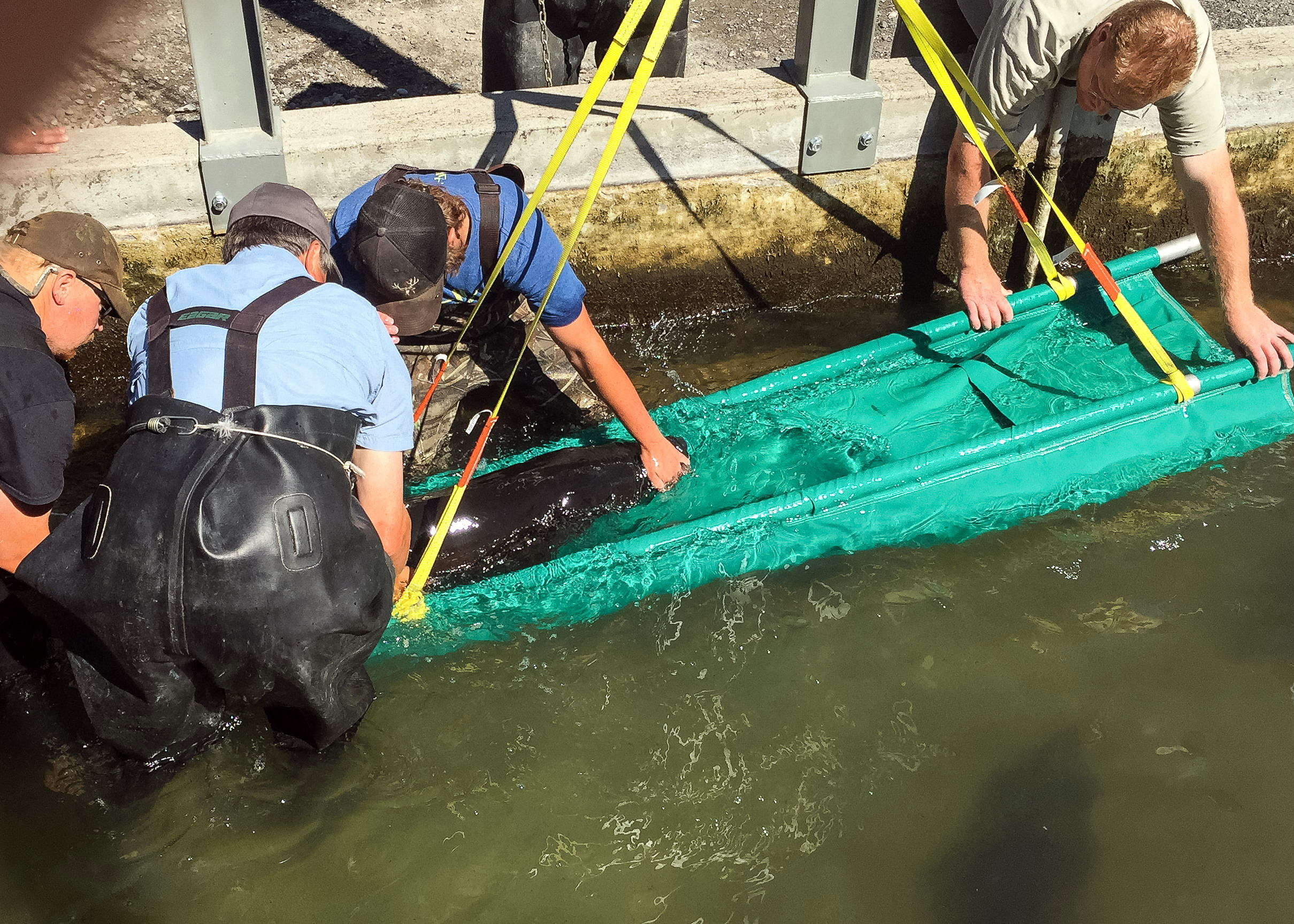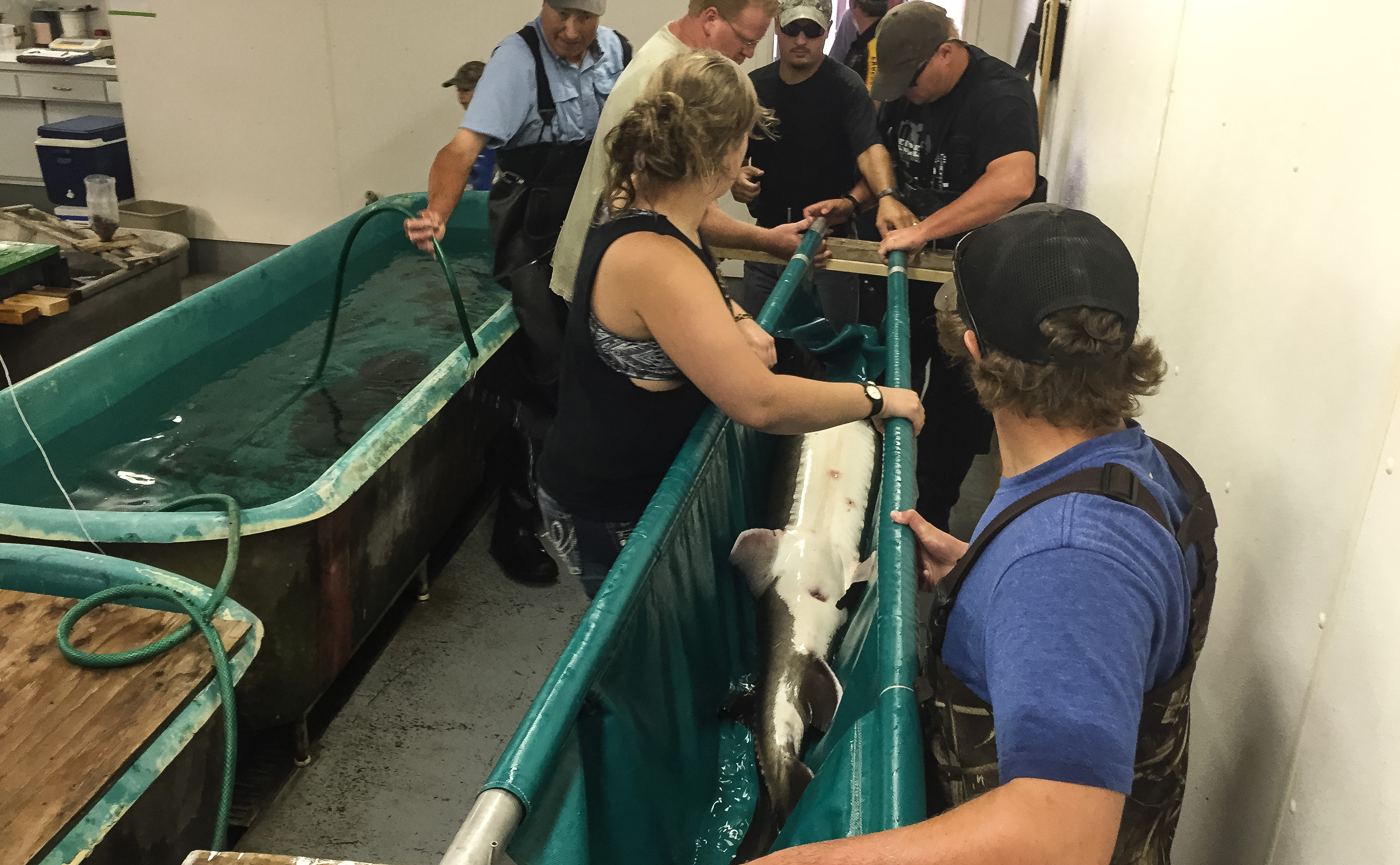
Photo: A wild adult sturgeon is loaded into the transport sling in preparation for spawning.
If you missed Part 2, you can read it here.
After wild adult sturgeon have made it to College of Southern Idaho’s fish hatchery, they must wait several months to reach full maturity. Eggs are not collected until the absolutely critical last minute to make sure they are ready to be fertilized. This is to make sure the eggs collected will have the highest chance of hatching into baby sturgeon.
When an adult sturgeon is ready to spawn, hatchery staff and students work together to carefully move these giant fish into the spawning room. Spawning sturgeon in captivity requires careful surgery, so only one fish at a time is handled. This usually takes two teams: one to catch the fish, and another to carry it. Each sturgeon is individually tagged to keep track of its age, spawning condition, where it was collected, and where it will be released. Sturgeon are loaded into a sling with the help of a winch, and then transferred indoors to the wet lab.
 Photo: A sturgeon is transported indoors in preparation for spawning. During the procedure, hatchery staff will keep the fish breathing by supplying its gills with cold water from a hose.
Photo: A sturgeon is transported indoors in preparation for spawning. During the procedure, hatchery staff will keep the fish breathing by supplying its gills with cold water from a hose.
After being transferred indoors to the wet lab, sturgeon are secured in the sling upside down. A hose is then pipes fresh water through the gills to keep them breathing during the spawning process. The next and most critical step will be to remove the eggs! Unlike many other fish, this will require careful surgery to remove most of the eggs while making sure to keep the sturgeon healthy.

